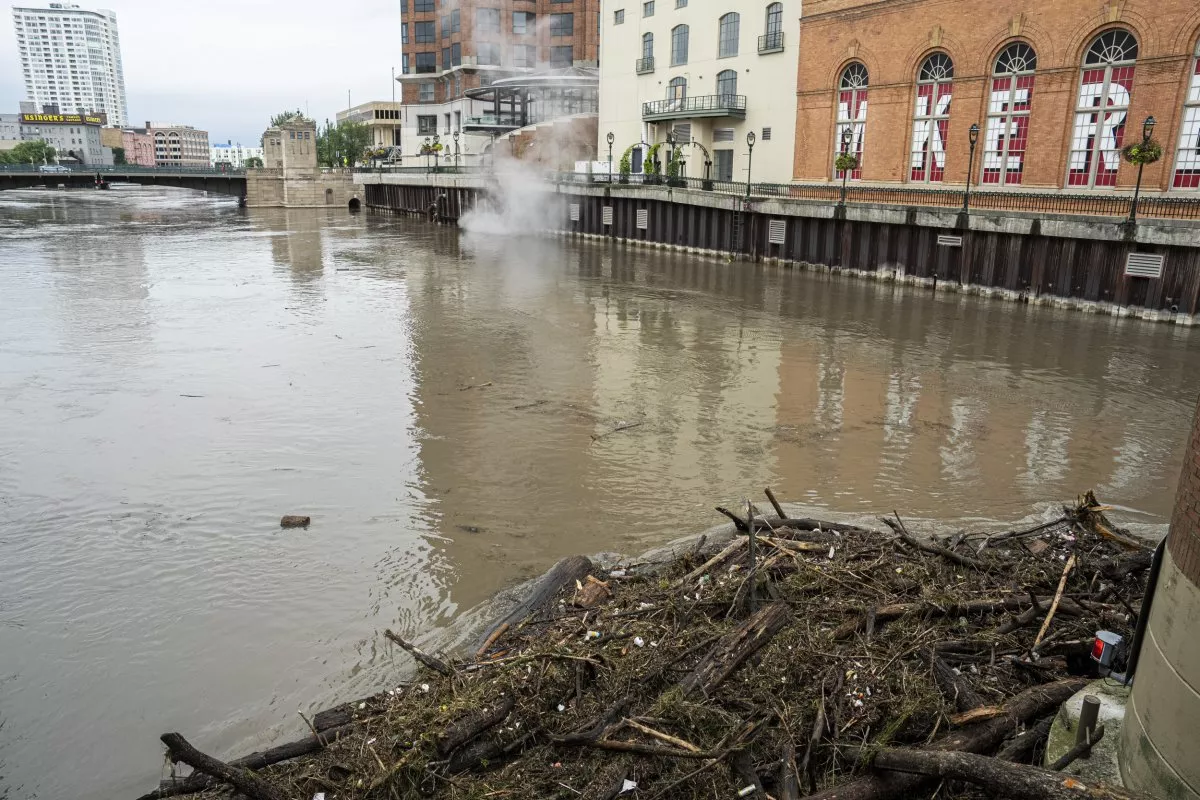Nearly 200,000 Warned to Avoid Travel as Emergency Declared – Newsweek
Nearly 200,000 people on Monday remained under flood warnings in the aftermath of torrential rainfall that dropped more than a foot on Milwaukee and its environs, prompting officials to issue a state of emergency over the weekend and caution motorists against traveling. Why It Matters The heavy rains in Wisconsin come as meteorologists have warned…
Nearly 200,000 people on Monday remained under flood warnings in the aftermath of torrential rainfall that dropped more than a foot on Milwaukee and its environs, prompting officials to issue a state of emergency over the weekend and caution motorists against traveling.
Why It Matters
The heavy rains in Wisconsin come as meteorologists have warned that climate change has contributed to the prevalence of 100-year and 1,000-year floods across the U.S. in recent years. As the atmosphere warms, it gains the ability to hold more moisture, which in turn can fuel heavy rains when storms roll into the area.
The floods in Wisconsin caused officials to cancel the last day of the Wisconsin State Fair. On Sunday, Milwaukee County declared a state of emergency and cautioned residents against driving or walking through flooded areas.
What To Know
As of Monday afternoon, numerous rivers were still flooding, according to warnings issued across the Badger State by National Weather Service (NWS) meteorologists.

Debris piles up at the base of a bridge along the Milwaukee River after torrential rains on August 10 in Milwaukee.
Andy Manis/Getty
These include the following rivers:
- Root River at Franklin, affecting Milwaukee County.
- Fox River Lower at Waukesha, affecting Waukesha County.
- Milwaukee River near Cedarburg, affecting Ozaukee County.
- Cedar Creek at Cedarburg, affecting Ozaukee County.
- Menomonee River at Menomonee Falls, affecting Waukesha County.
None of the rivers had reached major flood levels, though the Fox River Lower at Waukesha was experiencing moderate flooding. The others saw minor issues.
Flooding is the second deadliest weather hazard in the U.S. behind extreme heat. Most flood deaths occur in vehicles, prompting NWS officials to urge people against driving through flooded roadways.
“Turn around, don’t drown when encountering flooded roads. Most flood
deaths occur in vehicles,” NWS Milwaukee said in one flood warning. “Caution is urged when walking near riverbanks. Motorists should not attempt to drive around barricades or drive cars through flooded areas.”
Most of the rain has stopped, but NWS meteorologist JJ Wood told Newsweek there is a 40 percent to 50 percent chance for showers and storms overnight Monday, and a 30 percent to 40 percent chance of additional rain Tuesday afternoon.
“Any storms that do move through the area, we are expecting them to move through at a fairly decent rate,” he said. “We are not expecting big, flash flooding impacts like we’ve seen over the weekend.”
What People Are Saying
Milwaukee County Executive David Crowley, in a news release: “Flooding is still an active emergency situation across Milwaukee County, and we are expecting more rain today and into this evening. Our top priority is the life and safety of Milwaukee County residents. I strongly urge our residents to stay cautious, stay informed, and refrain from traveling. Check in on your neighbors and loved ones, especially older adults, and seek out emergency assistance if needed. I am thankful to our first responders, law enforcement partners, social services workers, and neighbors who are lending a helping hand during a challenging time. We will get through this together, Milwaukee.”
NWS Milwaukee, in a flood warning: “Be especially cautious at night when it is harder to recognize the dangers of flooding.”
What’s Next
Some of the flood warnings are set to expire by early Wednesday afternoon, whereas others will remain in place until further notice, as it can take time for flooded river levels to recede. Wood said it will be dry for the next several days after Tuesday, which carries the chance of rain.


